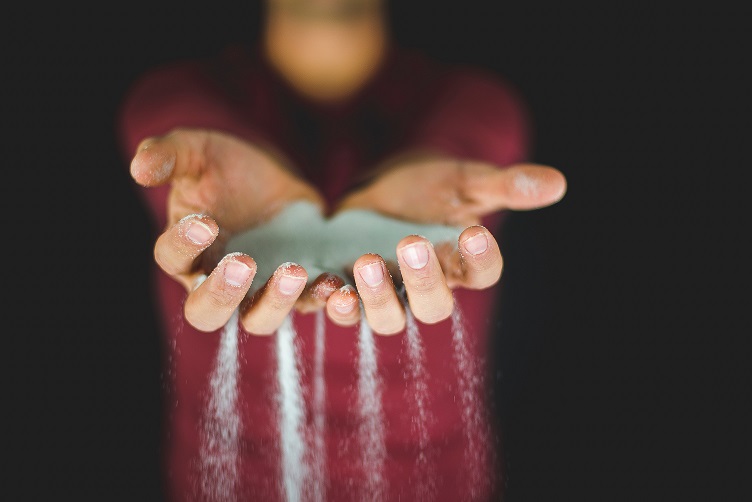Sensory Processing Disorder, They’re not uncommon and they can be managed!

22nd of August, 2018
By Brendan Dunphy, BLD Communication
To use a more technical term, Sensory Processing Disorder or (SPD), is essentially a neurological condition that can impair the sensory functioning skills of both children and adults. People with SPD – and of course, there are varying degrees of the condition –misinterpret everyday sensory information such as touch, sound and movement.
In general, people with SPD experience their world as either hypersensitive – so seeking to avoid sensory input – for example, they may be unable to tolerate bright lights and loud noises or even refuse to wear certain types of clothing because of how it feels on their skin.
Or they may be hyposensitive – so actively seeking sensory input – for example, a constant need to touch people even when it’s not socially acceptable, or simply loving jumping, bumping and crashing activities for the sheer sensory experience!
Sensory issues can also create extreme behaviours. For example, there may be a dramatic mood swing in reaction to a change in the environment. A child might be fine in a quiet setting with a calm adult, but in a shopping centre filled with people, noise and lights – so a sensory overload – they may be unable to cope and have a meltdown.
So how does SPD get triggered?
Given the varying levels of SPD between individuals, our comments here are more general in nature and, of course, we always recommend a professional diagnosis. This said, as it is a common condition in both adults and children, there has been much research on how SPD ‘functions’ and it typically points to both the operation of the brain and nervous system.
In simple terms, the brain and nervous system receive input from body parts as well as from the outside world. The central nervous system also transmits messages throughout the body so functions a little like a computer system.
Nervous system impacts
In the case of the nervous system, the messages communicate functions such as muscle movement, coordination, learning, memory, emotion, behaviour and even thought. As with the computer example, a breakdown or malfunction in one part of the system can affect other functions of the system.
Brain impacts
All sensations from hearing, vision, taste, smell, touch, pressure, and movement provide input to the brain and when there is a sensory processing issue, the brain does not process or organise the flow of sensory impulses in a way that gives precise information. Because of this, learning can be difficult and those with SPD have difficulty coping with the constant flow of daily sensory inputs.
So what can you do?
The good news is that there are many tools and techniques that can help not only those with SPD, but their carers as well. Both the techniques and tools are targeted to calming and concertation outcomes and can, over a period of time, have a remarkably positive impact on the level and intensity of SPD a person may have.
The tools/toys
Multi-sensory tools (often called toys) can be a vital and effective part in the treatment of sensory disorders in both children and adults alike.
For example, those that are under-responsive to sensation (hyposensitive) often need to feel intense outside sensations like texture, touch, pressure and speed. Sensory tools can be used as to help them calm and focus their attention. They can also help with self-regulation and even decrease stress.
These toys/tools have now been recognised internationally as truly effective solutions to managing SPD in adults and children. As important, they take the pressure off carers, allowing them more respite time.
NADO and sensory tools
As part of NADO’s commitment to providing services and support to the needs and personal goals of people with disability, their families and carers, we are actively engaged in the management of SPD and are pleased to announce we will be carrying some of the very best sensory tools to improve the lives of those with the condition as well as those that care for them.
Some of these toys will include the Moluk designed Bilibo and Oogie, known internationally for their simple, innovative and tactile design that can keep children with SPD focused for hours on end. There will also be a range of Neptune sleeping blankets. These are weighted blankets specifically designed to offer sensory calmness in or out of bed.
With warmers, fidget toys and balance equipment, our goal is to provide appropriate and successful toy/tool options across the SPD spectrum. To ensure we are carrying the right toys, we are trialling them to ensure their suitability. Indeed, recent feedback from one of our trials was from a mother who noted (on the Bilibo range):
“I recently used the Bilibo seat and my daughter and I love it. My daughter is on the spectrum and highly sensory, even an activity of watching television ends up with her jumping all over the lounge room, but with the Bilibo seat she can spin and rock as she pleases in the one spot to get her sensory needs met. Highly recommended for any child that can’t sit still.” — Casey
We would love to hear your experience if you have engaged with or used sensory toys. From what they were to how effective they were in use. This feedback can help guide our own selection process.
As always, reach out and contact us anytime, we actively encourage feedback on our blog content in general. We are always open to suggestions and comments!


